
The Dart Procedures
The Dart Procedures website is intended primarily for Alexander Technique teachers, teacher-trainees, and students. The site is comprised largely of material generously provided by my teachers, Joan and Alexander Murray. This site is a work in progress, as more material will be added. –Marian Goldberg
The Dart Procedures Contents:
A Fascinating and Stimulating Exchange
A Fascinating and Stimulating Exchange: Raymond Dart's and Alex and Joan Murrays' Correspondence
A key part of the collaboration of Raymond Dart with Alex and Joan Murray was their written correspondence during the 1960s and 1970s.
The following is much of the written correspondence between Raymond Dart and Alexander and Joan Murray from 1967 to 1971. Most of the letters were handwritten and have been transcribed from xerox copies by Marian Goldberg. The typewritten letters are scans of xeroxes of of the originals. One hand printed letter from Alex Murray to Dart has been scanned from a xerox copy. This material has been generously provided by the Murrays.
1967 Dart/Murray Correspondence
1968 Dart/Murray Correspondence
1969 Dart/Murray Correspondence
1970s Dart/Murray Correspondence
Raymond Dart and Alexander and Joan Murray Correspondence 1969
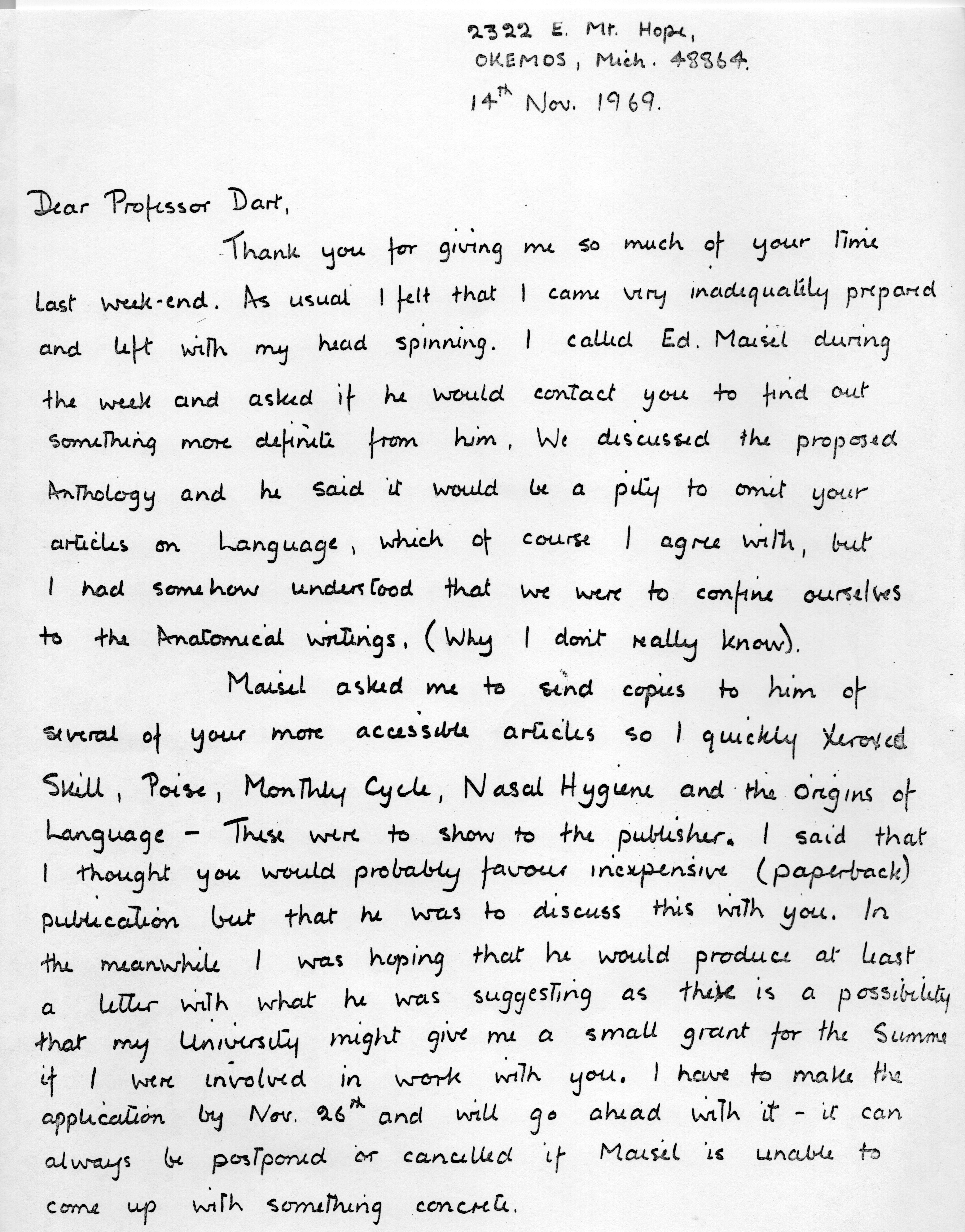
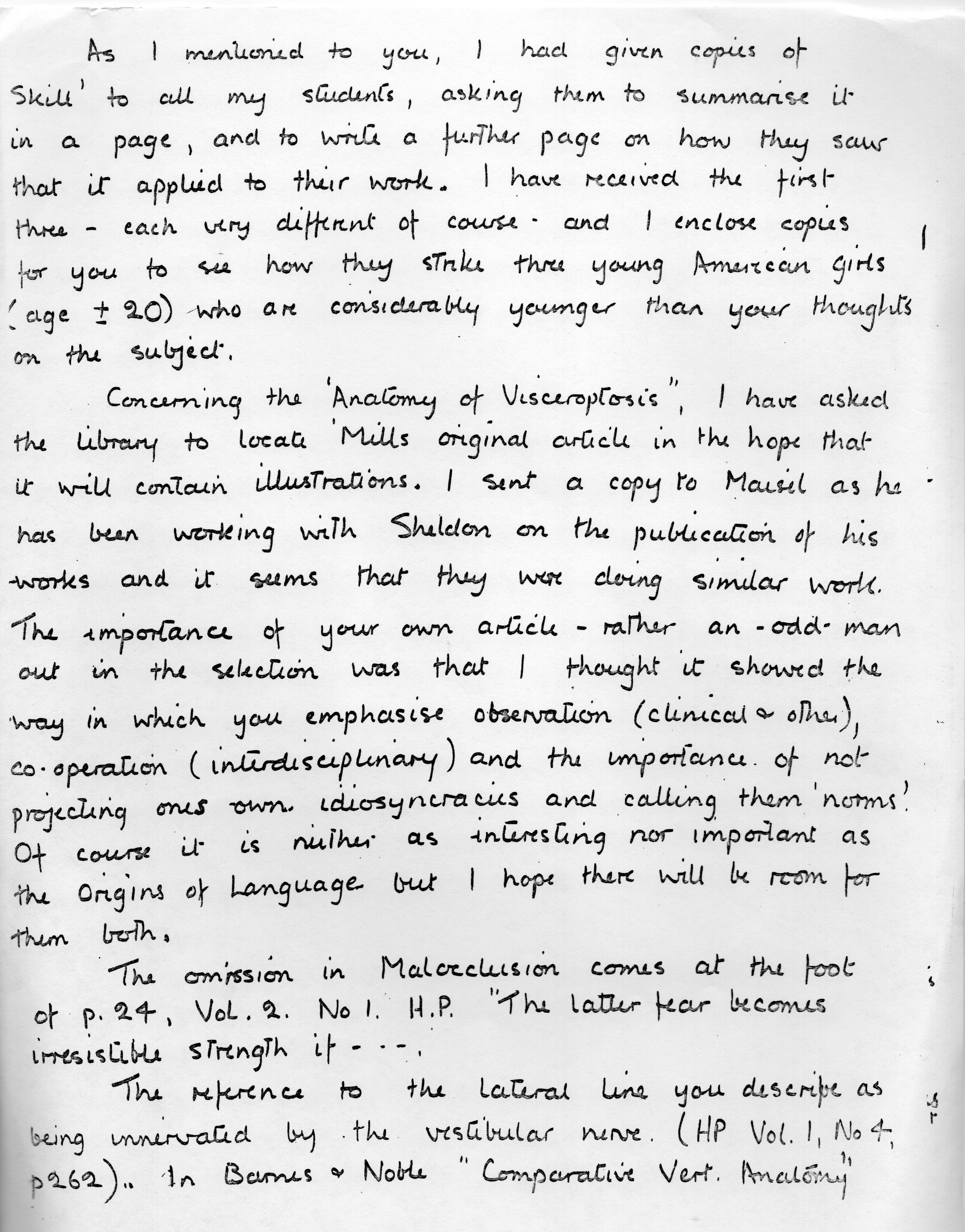
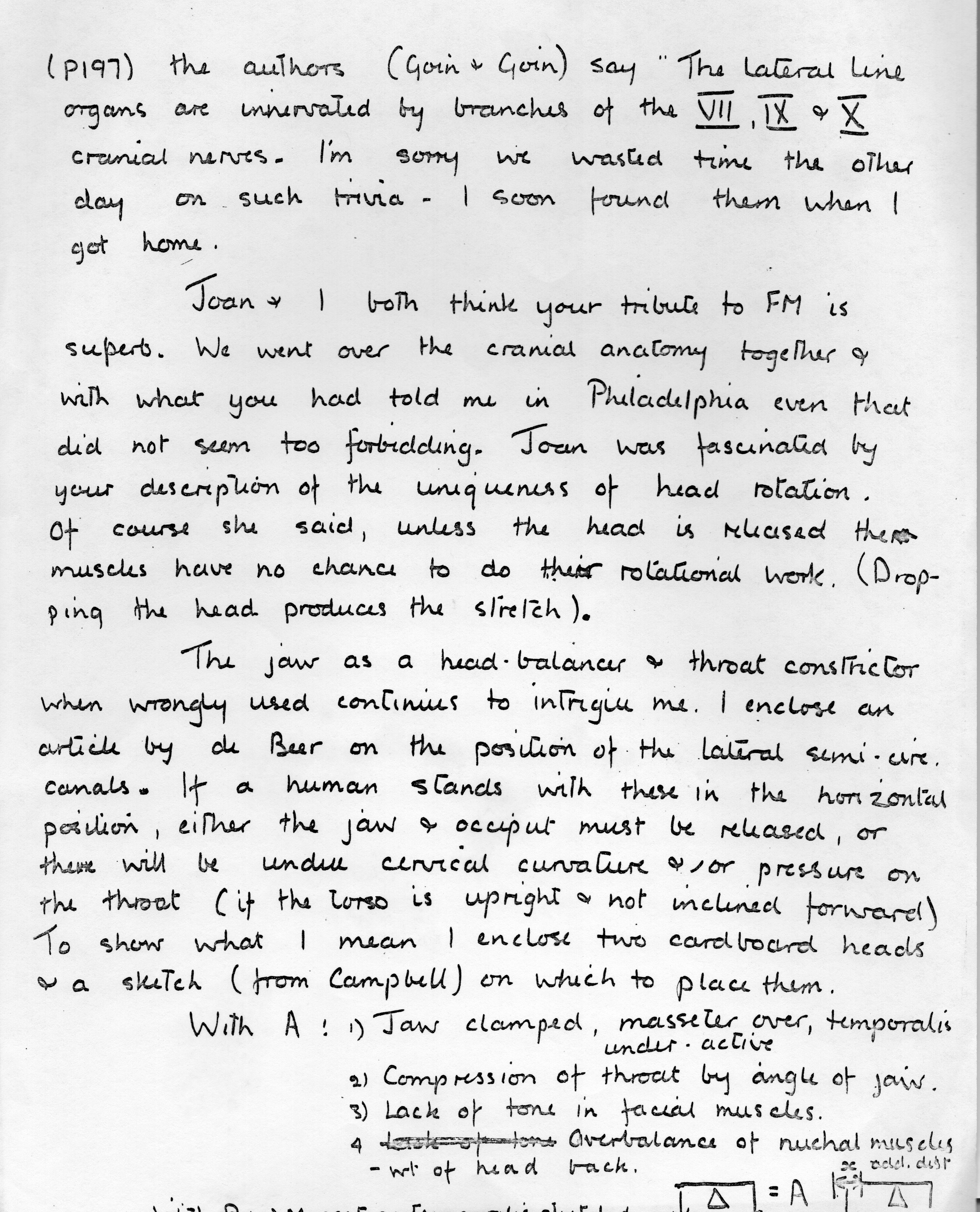
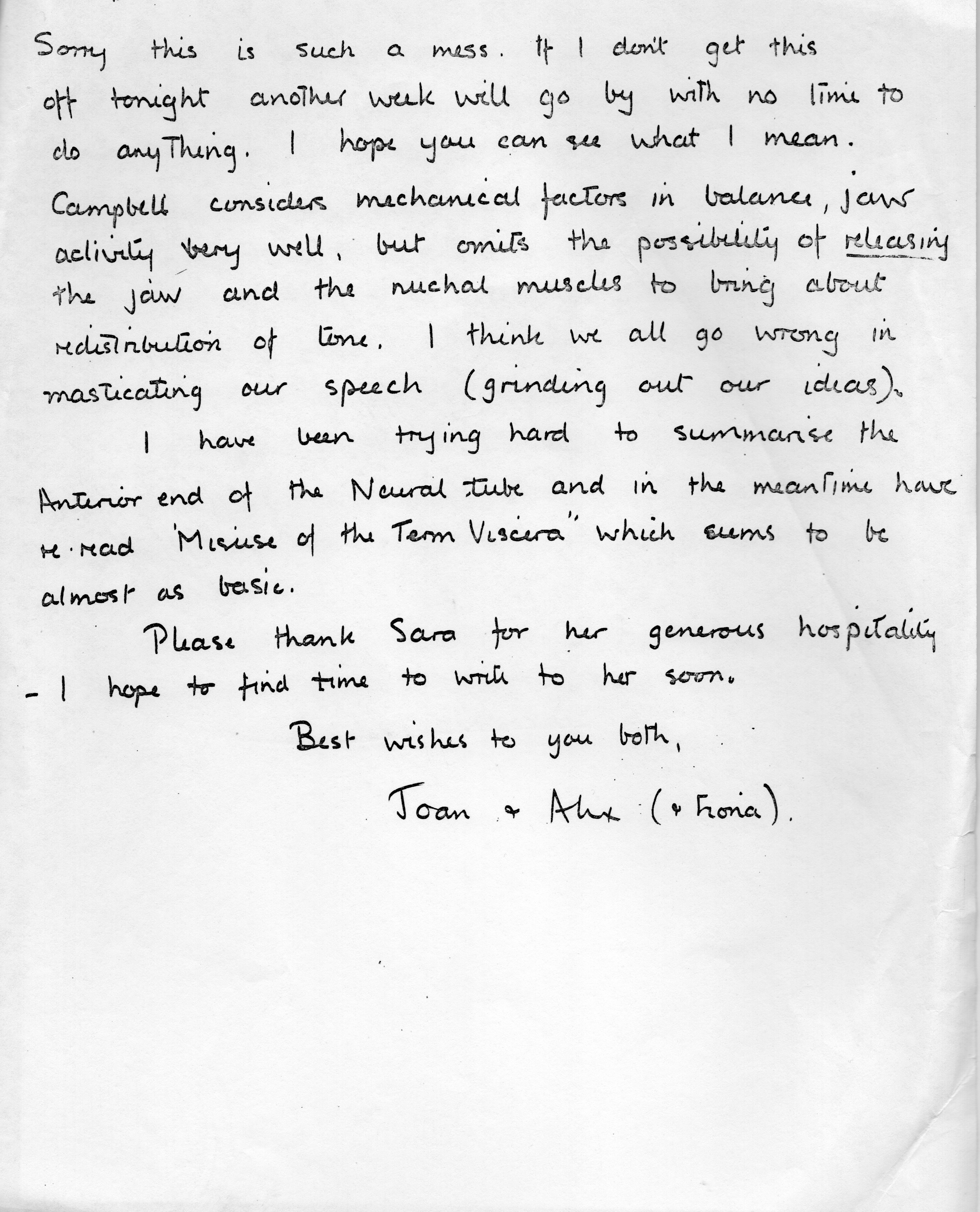
19-11-69
The Institutes for the Achievement of Human Potential
Dear Joan & Alex,
I am glad to have your letter, the students reactions despite the intervening 35 years & also the copy of DeBeer’s address. While reading it I decided to send you a copy of Robert James Terry’s article in the 1957 Encyc. Brit. on the SKELETON. He was my chief in St. Louis (1920) for six months; & today’s article is not the equal of his, which I find interesting for its Fig 22—Evolutions of limbs in Tetrapods as well as other things like Fig. 3 showing the vertebra & first of all the ATLAS. I should have given you this copy when you were here: but perhaps it would have been too much at that time. If you have a copy already you could send this one to Walter Carrington or anyone else who seems to you to need it.
The other omission of which I was guilty, where you were putting the tips of your thumbs & first two digits on the hyoid, mandible’s ramus & its articular process, was failing to call your attention to the usefulness of putting your two index finger tips _____ on the transverse processes of the atlas (the only bony points we can contact just below the mastoid processes) on either side also while you swing your head (i.e. rotate it) laterally in order to ______ how they & the atlas go around.) the odontoid process of the axis as part & parcel of the cranium & lower jaw unit. In nodding the head contrarily the head & jaw move fore & aft (up & down) on the fixed atlas & its temporarily immobile transverse processes. This may be a very useful distinction in body movement sensation for your musical students to attain.
If the decision as to what to include and what to exclude in the book becomes too complex it may be better in the long run to consider the possibility of two booklets: one dealing with man’s physical & the other with man’s cultural evolution (or its dependence on the physical side). I think that before becoming committed it would be better at the outset to be as far ranging as possible (first to relax & then to contract).
I have never really understood what the omission really is & where it occurs! When I compare the text in both the original paper & in Human Potential. They seem to be in accord with one another.
Yes! the lateral line in fish & its disappearance in terrestrial creatures has led to a lot of numerical confusion, just as the constricting action of muscles have worried the singers who need to be relaxed & respiring while the hyoid & jaws were fixed enough to balance the moving tongue, etc.
Do not be worried that it has taken so long a time to see that “the misuse of the term visceral” was a relevant paper. You are the first person since myself into whose brain that message to my knowledge has really penetrated so it shows how poorly the message was delivered half a century ago; or alternatively? how many of these things needed to be unearthed & found (like _______ ) to demonstrate its relevance.
Reverting to DeBeer’s paper he might have been able to check the student’s angles more accurately (or less surreptitiously) if he had photographed both sides of their heads at the same _____ _____ semicirculars ____ of the deviation of the prone (transform) from the horizontal rested on both sides. The counter-clockwise rotation of the lateral semicircular canals in man as compared with those of mammals vis-a-vis the basal plate is a useful fact to have been established independently by those authors. But the ____ of what man’s line of sight should be & its angular relation to the lateral semicircular canals of both sides) & to the _________ horizontal would probably be more critically examined by Dr. Frank Pierce Jones. You should put it to him: he has the cameras that are necessary.
I have not heard so far from Maisel but obviously the work will take some time whatever is attempted. With kindest regards to you three from all of us,
Yours sincerely,
Raymond A Dart
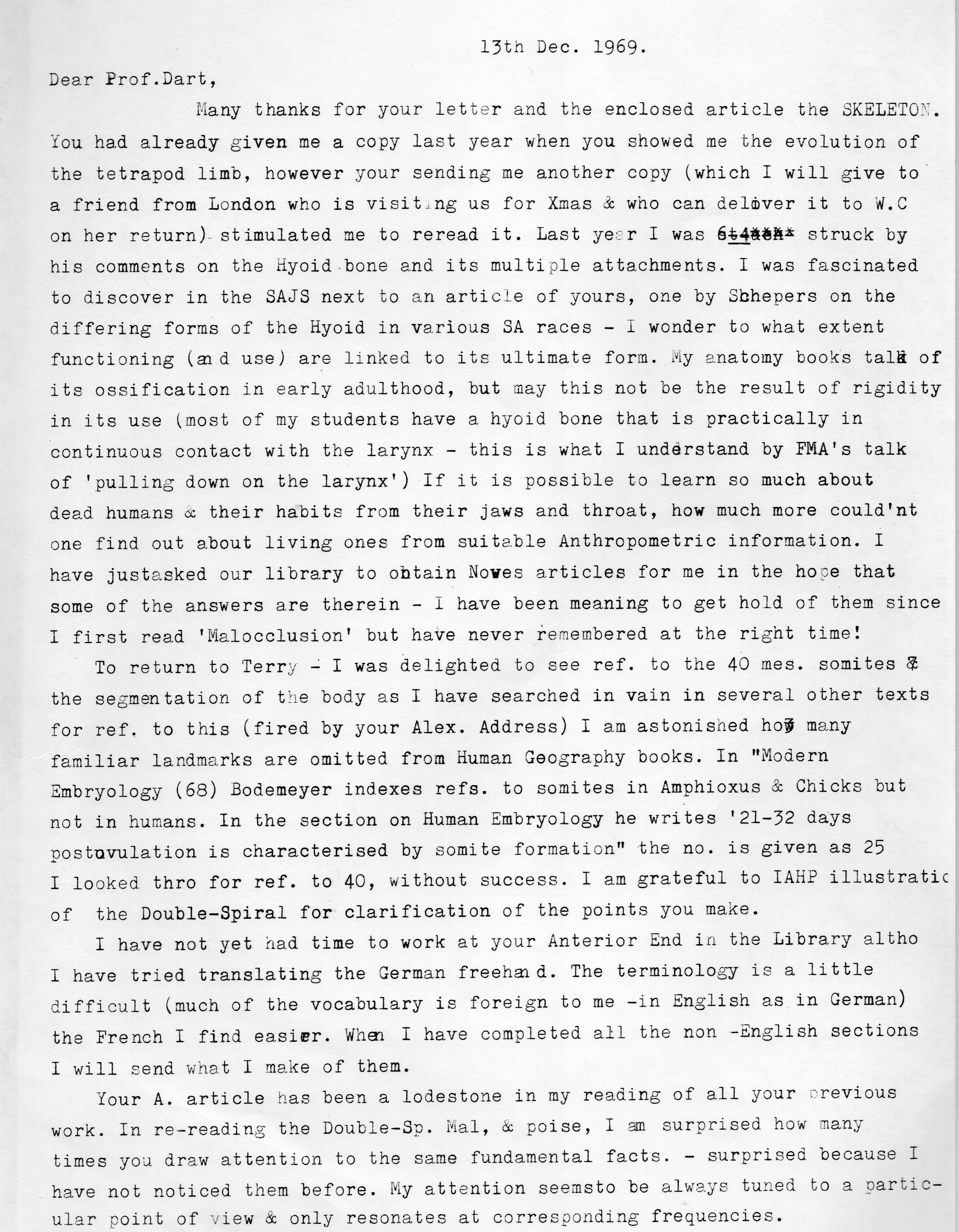
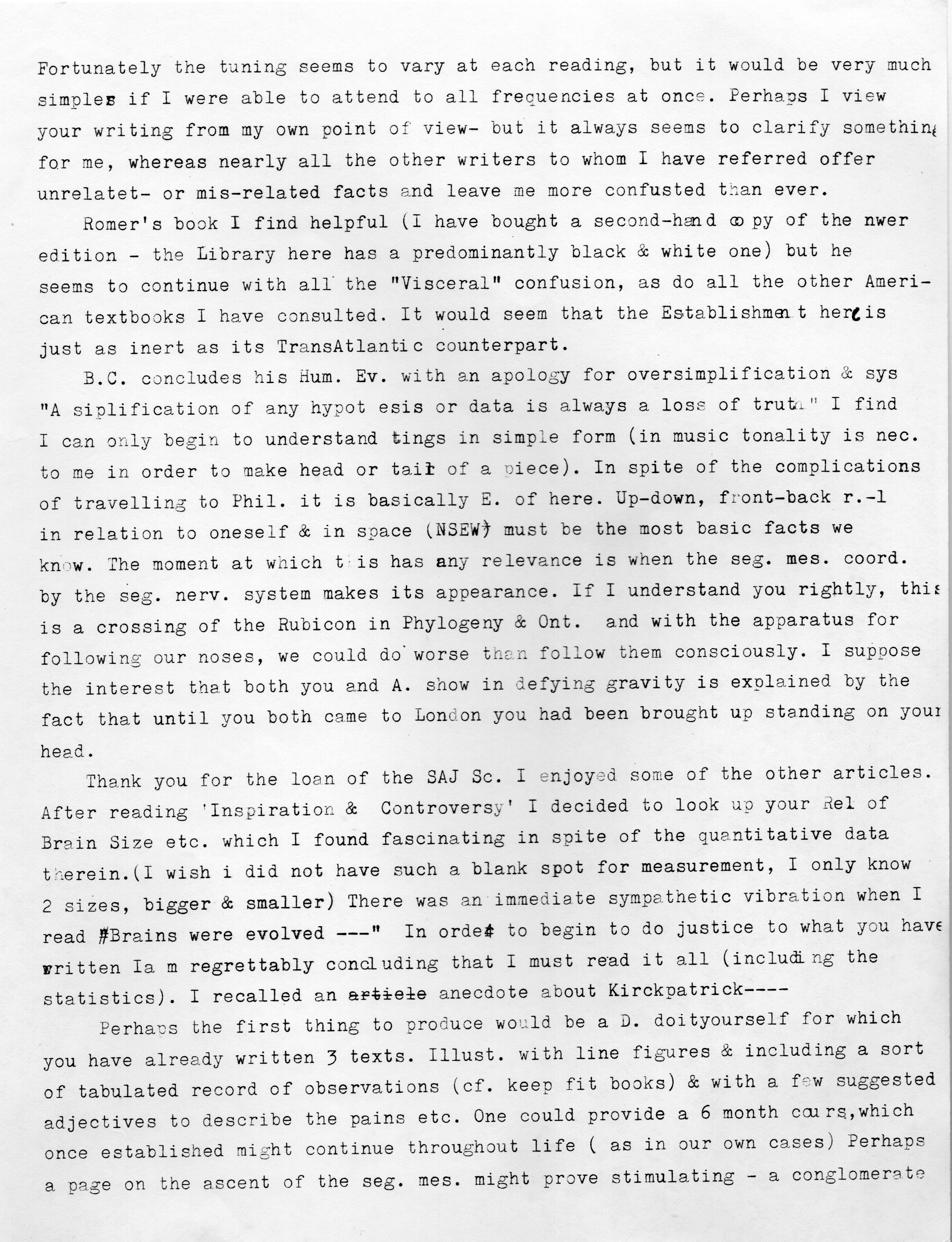
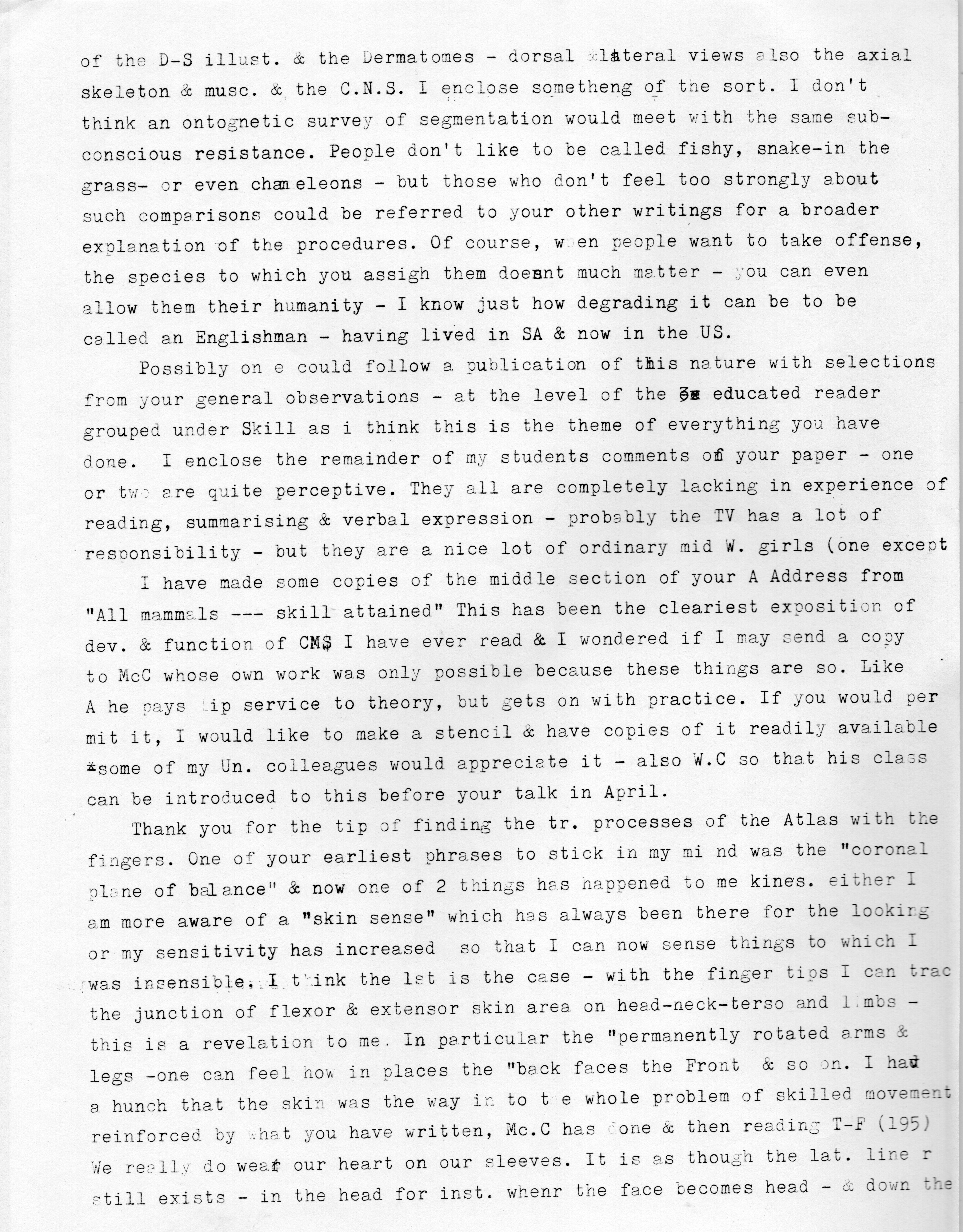
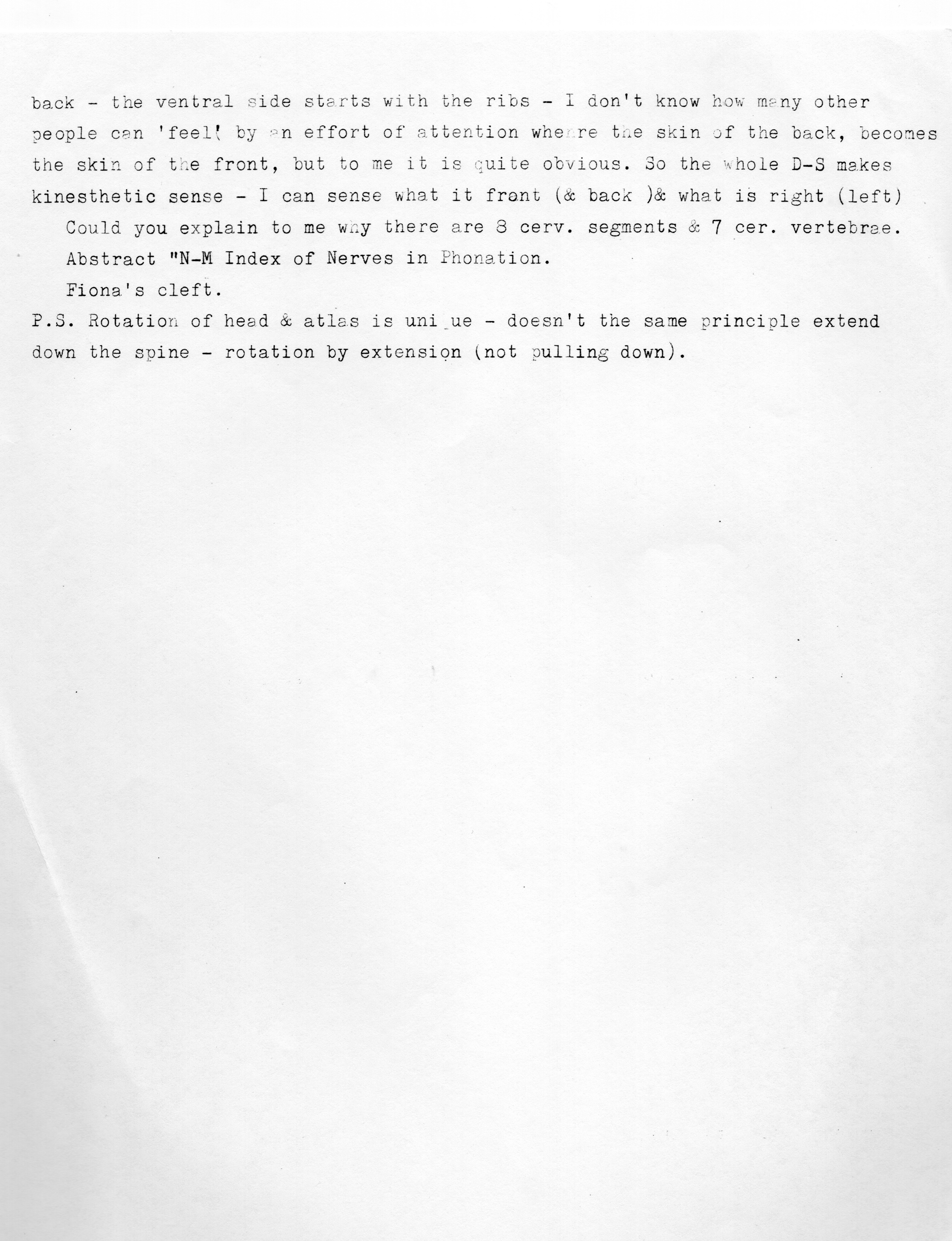
IAHP
19-12-69
Dear Alex,
I was glad to have your letter before our leaving for South Africa early next Monday. The comments of your students upon The Significance of Skill are very interesting & are so revelatory that the exercise you set for them to perform must have been helpful to each one of them in these “no essays in examinations” days.
Perhaps the greater use of the voice by Bantu speaking people, who have not had the voice-destroying influence of writing & the written word operating upon them, is a factor along with singing & dancing in promoting laryngeal & respiratory as well as muscular efficiency in affecting the form & strength of their hyoid bone.
I am sorry to have written so many things about the matters in which you have been interested but the human body took a long time to emerge & followed such a fantastic path of decisions & alterations in coming into being that the miracle is in our even having arrived at the stage of visualizing the process at all; & of course we never could have reached it without the discoveries of speech & music (or rhythm & b___ & pipes & drums), of alphabets (after hieroglyphs, etc. [and the Rosetta Stone etc. etc.]), of the sciences (physics, chem, botany, zoology, geology, paleontology, etc) & of the humanities (languages, social organisation, art, religion).
The big thing now amidst the oceanic future of scientific fact will be the individual’s keeping his head above the water; & maybe this is what you & your students are discovering to be necessary. Have you ever looked at Lloyd S. Woodburne’s The Neural Basis of Behavior, Charles E Merrill Books, Inc. Columbus, Ohio, 1967. 378 pp. It is a digest of the nervous system written for psychologists. If it had been expanded to include the musculature it would have served the needs of artists like musicians & dancers etc. It may _____ introductory chart of development such as you have in mind would certainly be useful. Why not try your own hand at writing it & constructing whatever glossary would be needed.
There are 7 cervical vertebrae but there have to be 8 cervical nerves because if you called the one supplying the muscles connected atlas to cranium you obviously needed an eighth one to supply the muscles connecting the 7th vertebrae to the first rib. The vertebrae & ribs are intersegmental structures contributed in part from the bottom (or posterior) part of the segment above (i.e. in front) & in part from the top (or anterior) part of the segment below (i.e. behind). The sensory & muscular & neural tube segment (or neuromere) are the segmental substance proper.
There does seem to be a relationship between the ________ of nerve fibres (or their myelin sheaths) & the distance (as well as the speed with which) the impulses they transmit travel but I am not acquainted with the authority you quote or the HM Index of _____ involved in phonation. It sounds very feasible.
I have no objection to your familiarizing McConnel or our friends in London with such parts of the address as you feel may be valuable for them to know beforehand. The only thing is that those who attend may find what I have to say boring, or that others stay away because they have heard it already. But I leave that to your own judgment, like the overlooked uvula; why interfere with nature until circumstances demand it? I see no need.
The rotation of the spinal vertebrae relative to one another is a flexor pulling (e.g. of intercostals, etc.) which operates on the transverse processes of the (e.g. lumbar) vertebrae, which is not resisted by any of the extensors; or it is an extensor pulling on the ribs (or shoulders or neck) unopposed by the flexors. They are mass movements of all the segments that happen to be involved & result in merely a partial twist in each segment of the flexor-extensor segmental muscles involved.
The rotation of the atlas is around its own body [which became detached from it & was transformed into the dens (or tooth) of the axis vertebrae so extensor muscles operating from skull & axis on the transverse process oppose one another; the left group contracting while the right relax & vice versa. And while it is rotating the head can be nodding fore & aft on the atlas! These are the things that are unique.
A merry Xmas & a great 1970 for all three of you from all here.
Yours sincerely,
Raymond A Dart
1967 Dart/Murray Correspondence
1968 Dart/Murray Correspondence
1970s Dart/Murray Correspondence
Return to:
Alexander Technique: The Insiders' Guide
Alexander Technique: The Insiders' Guide and The Dart Procedures websites created and maintained by Marian Goldberg, Alexander Technique Center of Washington.
“The big thing now amidst the oceanic future of scientific fact will be the individual’s keeping his head above the water” –Raymond A. Dart. Letter to Alex Murray.
December 19, 1969
